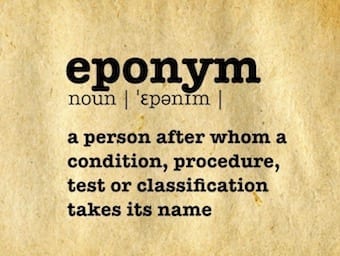Sophie Spitz
Sophie Spitz (1910 - 1956) was an American pathologist. Spitz nevus (1948)
Sophie Spitz (1910 - 1956) was an American pathologist. Spitz nevus (1948)

Ann J. Johanson (1934 - 2020) was an American pediatric endocrinologist. Johanson-Blizzard Syndrome in 1971

Otto Ullrich (1894 - 1957) was a German pediatrician. Eponymously remembered for his description of Ullrich-Turner syndrome (1930)
Sir Arthur Keith (1866 - 1955) was a Scottish anatomist, embryologist and physical anthropologist.
Sunao Tawara 田原 淳, (1873 - 1952) was a Japanese pathologist. Aschoff-Tawara node (1906)
Pierre-Joseph Desault (1738 - 1795) was a French surgeon and anatomist.
Biography Born 2 September 1888, Munich Died 27 January 1969 Medical Eponyms Key Medical Contributions Major Publications Controversies References Biography Archiv für Psychiatrie und Zeitscrift für Neurologie 1965;207:165–67
Biography Born October 21, 1882 Died May 29, 1965 Medical Eponyms Key Medical Contributions Major Publications Controversies References Biography Archiv fur Psychiatrie und Zeitscrift fu¨r Neurologie 1965;207:165–67 Hughes JT. Neuropathology in Germany during World War II: Julius Hallervorden (1882-1965) and…

Barbara Mary Ansell (1923 - 2001) was an English paediatric rheumatologist. Ansell-Bywaters-Elderking syndrome (1975)

Catherine Annie Neill (1921 - 2006) was an English pediatric cardiologist. Neill-Dingwall syndrome (1950); Scimatar syndrome (1960)

Tsuya (née Sakurai) Kitagawa (1911 - 1995) was a Japanese ophthalmologist. Sakurai-Lisch nodules (1935)

Nadia Awni Sakati, Syrian-Saudi pediatrician. Eponymously affiliated with 3 rare genetic syndromes: Sakati-Nyhan-Tisdale syndrome (1971); Woodhouse–Sakati syndrome (1983); and Sanjad-Sakati syndrome (1991)